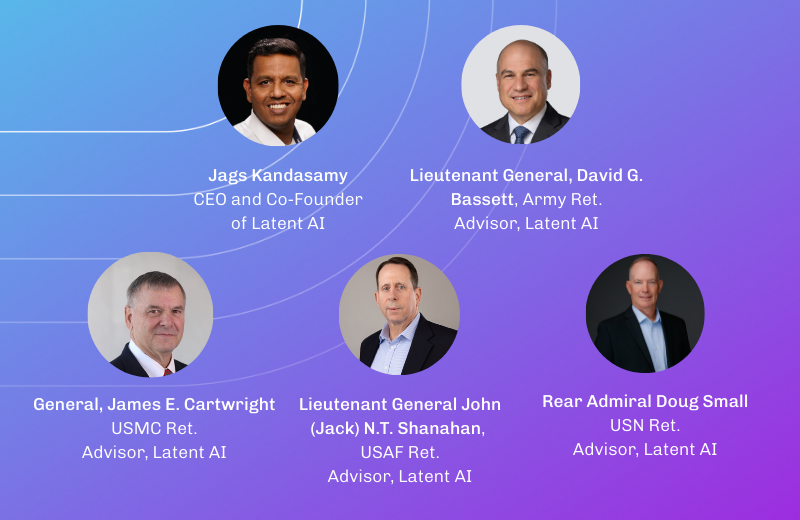From panic to powerhouse: Streamlined model deployment with Latent Agent
Your boss just dropped a bombshell: take the ML team’s latest model and build a fully functional edge AI app around it before the end of the quarter. You’re a DevOps engineer, not an edge AI expert, and the ML team is already swamped, leaving you to wrestle with unfamiliar hardware, model optimization, and model deployment headaches. Sounds like a recipe for late nights and endless Stack Overflow searches? Enter Latent Agent. This intelligent AI assistant, part of the Latent AI ecosystem, rescues you from the complexity of neural networks and writing code for edge devices. For DevOps, it means no need to take a deep dive into hardware or model intricacies; Latent Agent handles the heavy lifting, guiding you seamlessly from model selection to deployment. For ML engineers, it’s a game-changer, slashing prototyping time by over 100x, so you can focus on refining your software application, not fighting infrastructure. With Latent Agent, you’ll turn your boss’s ambitious demand into a delivered app, all while keeping your sanity intact.
What you need to get started with Latent Agent
To transform your edge AI project from a daunting task to a streamlined success, you’ll need just a few essentials. You won’t need deep ML expertise or even a programming language; instead, here’s what you need to hit the ground running:
- Visual Studio Code: A lightweight, versatile code editor with robust support for debugging, extensions, and workflows to keep your development process smooth.
- Roo Code: The chatbot interface for integrating and managing Latent Agent workflows, ensuring seamless interaction with the Latent AI ecosystem.
- Latent Agent License: Unlock the full power of Latent Agent, the intelligent AI assistant that simplifies model selection, optimization, and deployment, saving you time and complexity.
With these tools in hand, you’re ready to build your edge AI application.
How Latent Agent works
Latent Agent is your conversational guide to building edge AI software applications, powered by a multi-agent system crafted by ML experts to streamline the entire MLOps process. It’s agentic, meaning you just talk to it, and it walks you through each step with specialized expertise, sidestepping the steep learning curve and complexity of edge AI model deployment. Here’s how it works:
Initial consultation (Concierge Mode)
Start by chatting with Latent Agent’s Concierge mode. It explains what Latent Agent can do for you and coordinates with the Customer Success Specialist, asking the right questions about your project requirements, clarifying your goals, whether you’re building for IoT devices, wearables, or other edge environments, and setting a solid foundation for your project.
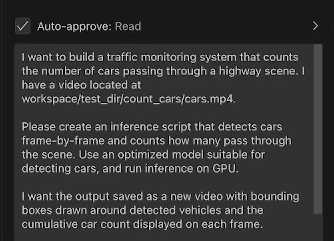
In our case, the ML team provided us with a model. But if we didn’t have a model, Latent Agent could guide us through the process of selecting a pre-trained model for our application. Latent Agent replaces days of manual model and hardware research with a quick, guided conversation. Without Latent Agent, you’d have to scour Hugging Face or our database for models manually, cross-check GPU compatibility, and risk missing key details. Latent Agent does this in minutes, streamlining your workflow.
Model selection (Recipe Explorer Mode)
Latent Agent allows you to bring your own pre-trained model, compile or export it for your target device, and deploy to an application Latent Agent helps you code. Even without a model or dataset, Latent Agent can recommend a compatible pre-trained model to help you prototype quickly, giving you a solid foundation to refine and fine-tune once your pipeline is validated. This is the area where Latent AI specializes. In this case, Latent Agent has scoured Hugging Face and recommended the detection transformer model ResNet-50.
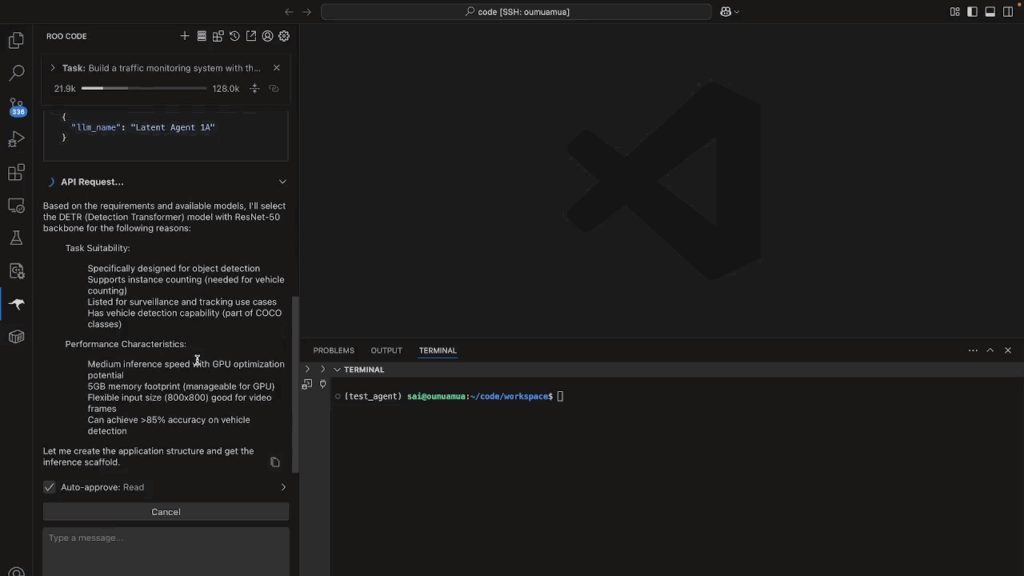
Application development (Application Engineer Mode)
Once your model is selected, the Application Engineer mode guides you through the implementation process. It provides step-by-step support for integrating the model into your application, ensuring compatibility with your development environment, and outputs a script for deployment.
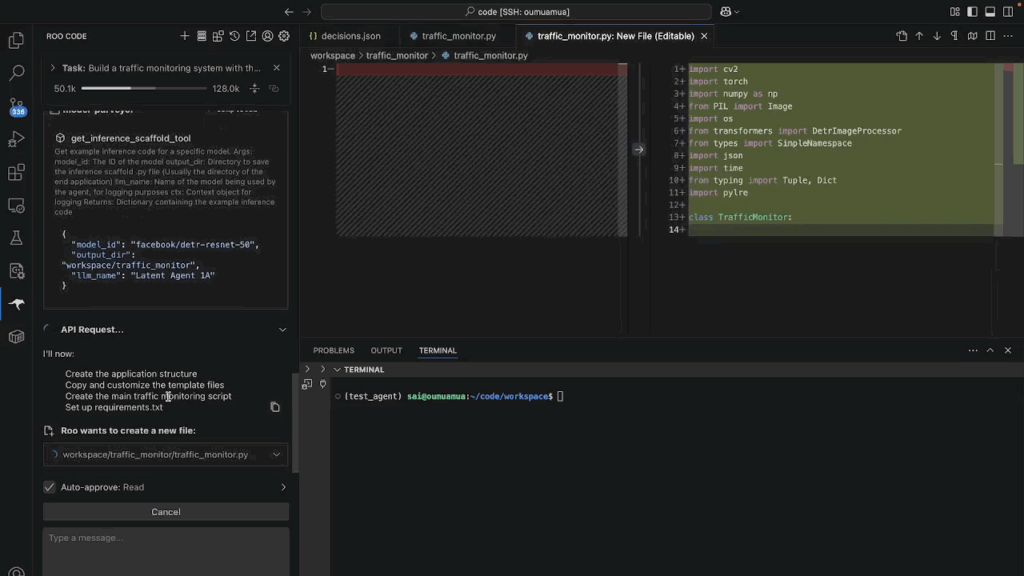
The script automates loading the video, preprocessing inputs, running inference with PyLRE (the Latent Runtime Engine), and adding bounding boxes with a vehicle counter. It also exports hourly counts to a CSV. Manually, you’d spend hours coding this, referencing Hugging Face APIs, PyLRE docs, and debugging errors like input shape mismatches. Latent Agent writes robust code in under two minutes, letting you focus on iteration.
Optimization (LEIP Optimize Integration)
Edge devices demand efficiency. Latent Agent seamlessly integrates with LEIP Optimize to fine-tune your model for hardware-specific requirements, maximizing accuracy, speed, and power efficiency without requiring you to be a hardware expert.
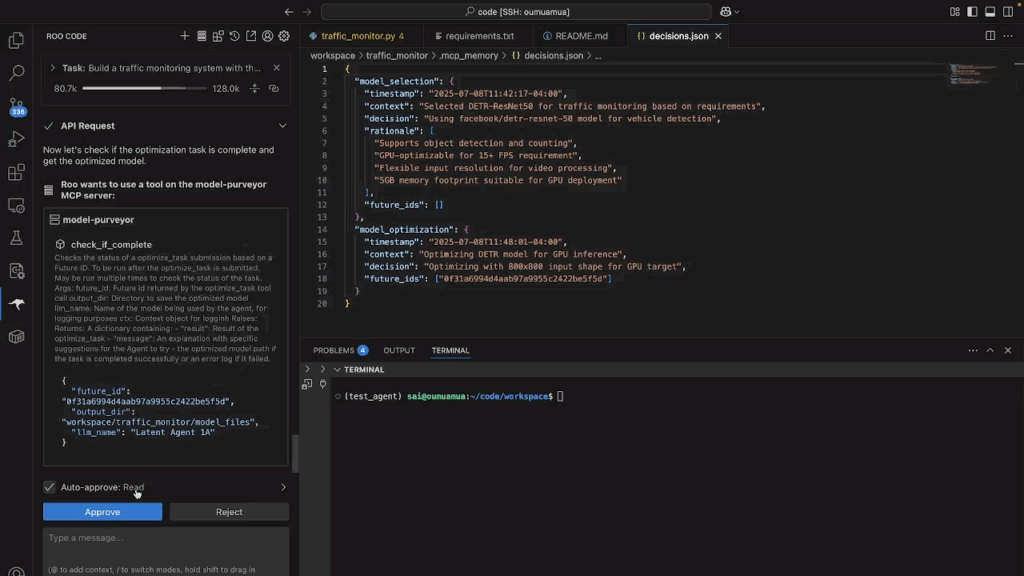
To achieve real-time performance on our GPU, Latent Agent optimizes and converts the model to ONNX for efficient edge inference, utilizing our cloud compilation service to tailor it to the GPU limit you specified when outlining the requirements for your project.
Our tooling simplifies the process of compiling or exporting models for your target device, eliminating the need for you to learn a new API. Without Latent Agent, you’d spend 30–45 minutes on ONNX Runtime docs or PyLRE guides. Latent Agent cuts this to under two minutes, reducing the model-to-device cycle from weeks to hours.
Testing and evaluation (Tester & Debugger Mode)
The Orchestrator mode routes to the Latent Agent’s Tester & Debugger mode to validate your application. Here’s how it ensures your edge AI app performs flawlessly:
- Environment Check: Latent Agent reviews your requirements.txt and leverages its pre-configured environment for rapid setup, eliminating manual configuration hassles.
- Input Validation: It confirms that input data, such as video files, is accessible and correctly formatted for processing.
- Code Optimization: The Latent Agent updates inference.py to enforce your required GPU memory limit, ensuring that resource constraints are met.
- Inference Execution: After you approve the changes, Latent Agent runs inference using PyLRE to load the optimized model, processes the input video, and generates an output video with bounding boxes and a counter.
- Performance Verification: The Latent Agent verifies that frame latency meets the FPS and GPU memory requirements, ensuring real-time processing as specified.
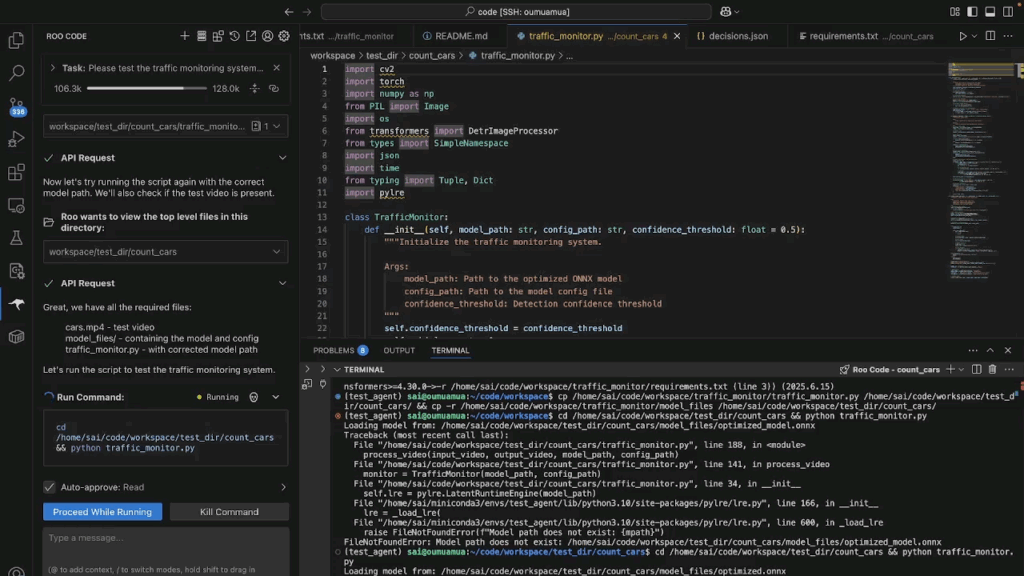
Why it matters: Manual testing requires setting up environments, debugging code, and tuning performance, often taking days. Latent Agent automates this process, catching issues like resource overuse and fixing them instantly, saving time and ensuring your app meets real-world demands.
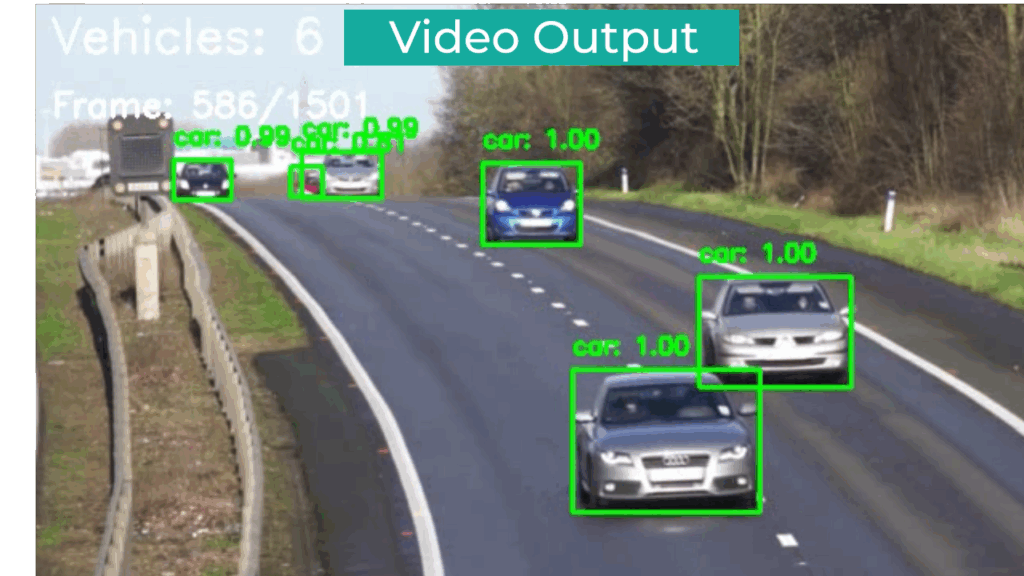
By orchestrating these steps, Latent Agent empowers DevOps engineers to build without deep AI expertise and enables ML practitioners to slash prototyping time by up to 90%. It’s like having an expert team in your pocket, making edge AI development faster, simpler, and more accessible.
Benefits and Conclusion
Latent Agent transforms the edge AI development landscape, delivering unparalleled efficiency and simplicity for DevOps and ML teams alike. Here’s why it stands out:
- Accelerated Development: Drastically reduces time from concept to deployment, enabling you to deliver edge AI applications faster than ever, up to 90% faster for ML prototyping.
- Optimized Performance: Ensures models run efficiently on target hardware, meeting constraints such as speed, power, and memory without requiring manual tuning.
- Expert Guidance: Provides specialized, step-by-step assistance at every stage, from model selection to testing, so you don’t need to be an edge AI expert.
- Best Practices: Incorporates industry standards and proven optimization techniques, ensuring your application is built on a foundation of reliability and excellence.
Latent Agent represents a significant advancement in edge AI development tools, combining intelligent, agentic assistance with a robust multi-agent system to simplify the complexities of MLOps and model deployment. Whether you’re a DevOps engineer looking to bypass the intricacies of hardware and models or an ML practitioner aiming to streamline prototyping, Latent Agent empowers you to build, optimize, and deploy with confidence. With Latent Agent, edge AI is no longer a daunting challenge; it’s an opportunity to innovate faster and smarter. Try Latent Agent and let us know your thoughts.




